Newford Farm, located in Athenry, Co Galway, is in the final stages of what is looking likely to be another successful breeding period. Cows were artificially inseminated for a six-week period which finished on 2 June, at which stage the Limousin and Simmental stock bulls were released for a four-week period to pick up any repeat cows. One-hundred cows were submitted for breeding from a total of 107 that calved down in 2017.
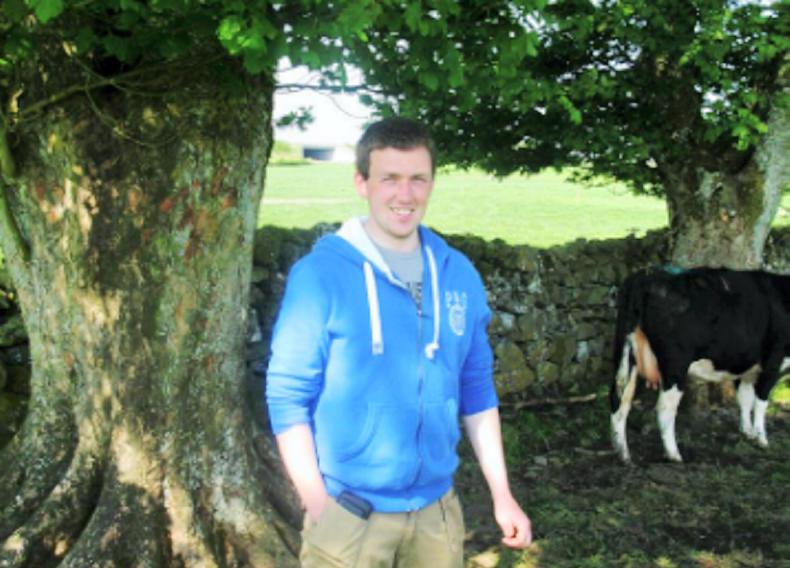 Farm manager Matthew Murphy (pictured) reports: “We had 92 out of 100 cows served in the first three weeks. I had 26 repeats after that, plus the seven that weren’t cycling and showing heat in the first three weeks, so, all in all, we only had one cow, a first calver, that hadn’t cycled at all. I administered Estrumate, so hopefully that will bring her cycling in the next three weeks.”
Farm manager Matthew Murphy (pictured) reports: “We had 92 out of 100 cows served in the first three weeks. I had 26 repeats after that, plus the seven that weren’t cycling and showing heat in the first three weeks, so, all in all, we only had one cow, a first calver, that hadn’t cycled at all. I administered Estrumate, so hopefully that will bring her cycling in the next three weeks.”
Cows were heat-checked at regular intervals throughout the day, with two vasectomised bulls and tail painting utilised as heat detection aids. Following the favourable results in 2016, AI was once again carried out daily at noon, with cows in heat in the evening or morning served. Cows still in heat the evening after AI received another straw the following day.
The selection criteria for selecting AI sires is similar to that used in 2016, which is five stars on the terminal index, less than 7% calving difficulty for mature cows and 6% for first- and second-calvers, along with greater than 30kg predicted carcase weight for mature cows and 25kg for first- and second-calvers with reliability figures of greater than 80%. The final factor was a cost of less than €15 per straw with three bulls selected.
The Charolais bull Fiston (FSZ) and Limousin bull Gamin return from 2016, while the Limousin sire Wilodge Goldcard (LM4050) is the preferred choice to Carrickbrack Hutch (CKH) due to his calving ease and greater carcase credentials.
The Limousin sire Towthorpe Dubai, with a calving ease of 4.6% and carcase weight of 26kg, is the sole sire selected for use on replacement heifers, with Elderberry Galahand (EBY) not used in 2017.
Successful calving
The 2017 calving season has put the farm in a good position to achieve positive performance in 2017.
There were 107 cows scanned in-calf, with calving frontloaded to the first seven weeks in a calving spread that started on 2 February and finished on 22 April.
There were two losses from scanning to calving (one heifer got hurt and lost a calf and one cow lost a calf), but the herd ended up with 108 live calves due to four sets of twins and only one mortality. This gives a calves per cow figure of 1.04 per cow calved and 0.96 calves per cow submitted for breeding.
The fact that the herd achieved such a positive breeding performance in 2016 also shortened the calving interval to 349 days.
Comprehensive records were maintained on each calving. As per the ICBF criteria, 71 cows recorded a normal calving, 24 required some assistance, seven were recorded as a calving score of three with considerable difficulty, while three cows required veterinary assistance.
Table 1 details the weight performance of 2017-born bull and heifer calves on 9 May 2017.
FSZ and CKH bull calves had a similar birthweight of 49kg and 48kg, with ZGM calves lighter at 43kg. There was a similar trend in heifers, with Charolais heifer calves averaging 41kg to 43kg, while ZGM calves were lighter at birth at 38kg.
Animal performance
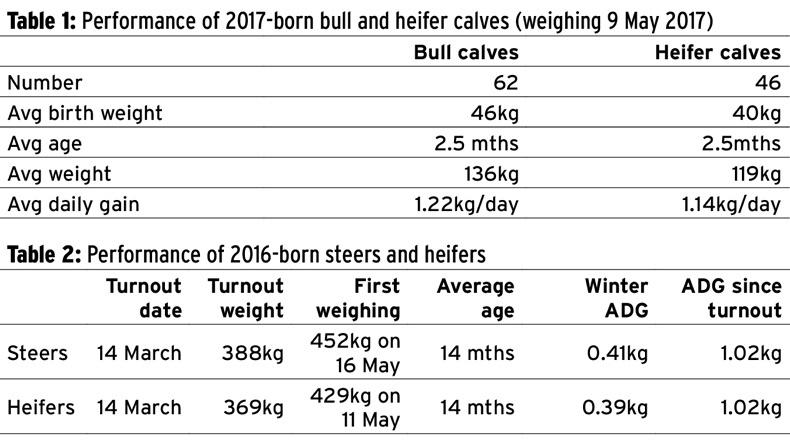
All animals have been weighed at least once at grass. Table 2 details the performance of 2016-born steers and heifers, with both groups achieving a daily gain of 1kg from turnout to weighing in early- to mid-May.
It should be noted that animals were rehoused briefly due to weather during this period.
The heifers are a very even batch, with very little variation in weight or quality. Steers, on the other hand, are more varied, with some steers born to first-calvers (Angus and Blonde d’Aquitaine) and some Charolais-cross steers falling behind their counterparts.
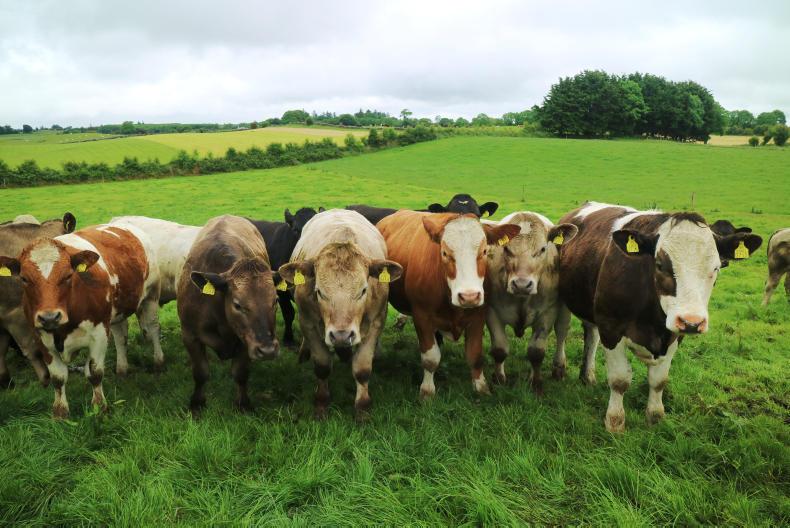
Matthew says that weights of yearling cattle are running 20kg higher on average than the same period in 2016, which should help in achieving the target of getting a higher percentage of cattle slaughtered off grass in 2017.
Grassland management
Grass growth rates were recorded at over 100kg DM/ha in the second half of May. The most recent grass budget carried out on 6 June showed growth easing back to 76kg DM/ha, which is not surprising given there were a number of surplus paddocks taken out of the rotation as grazed silage.
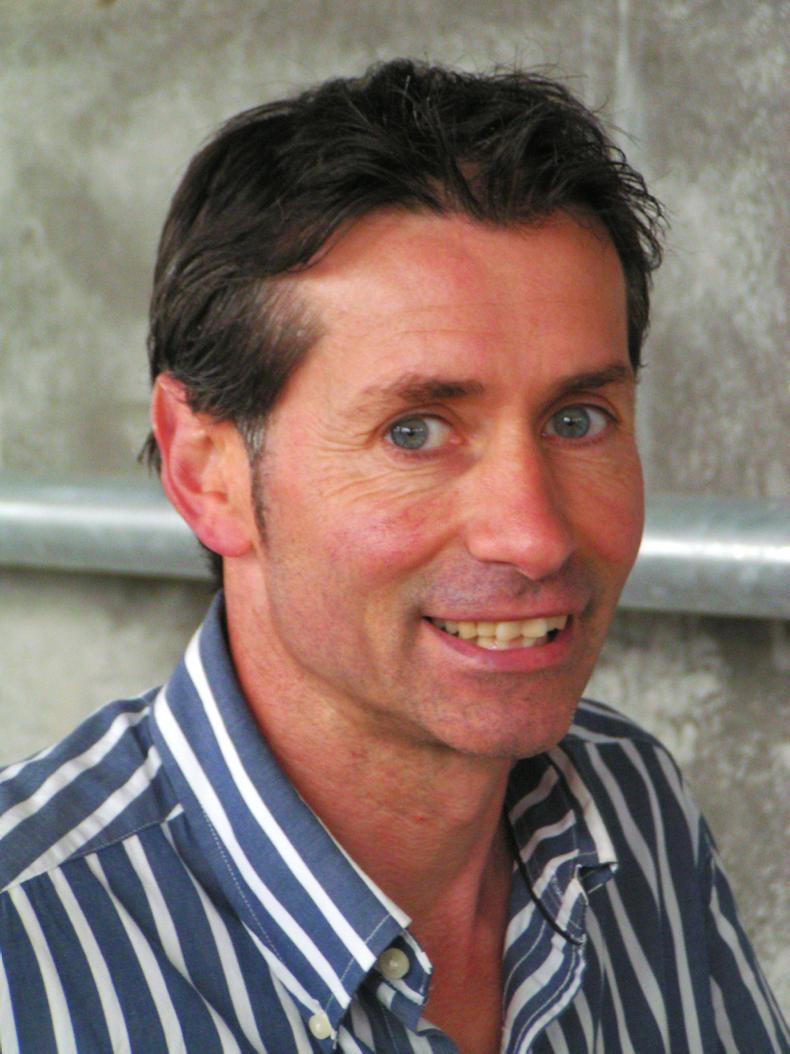 Teagasc technician Michael Fagan (pictured) explains that 15 acres of heavy surplus paddocks were baled on 24 May, bringing the total number for May to 114 bales. This joins 54 acres (21.8ha) of first-cut silage mowed on 28 May, allowed to wilt for a day and pitted on 29 May.
Teagasc technician Michael Fagan (pictured) explains that 15 acres of heavy surplus paddocks were baled on 24 May, bringing the total number for May to 114 bales. This joins 54 acres (21.8ha) of first-cut silage mowed on 28 May, allowed to wilt for a day and pitted on 29 May.
Michael says that this was greatly boosted by the surge in growth rates in May and estimates the yield at 10t DM/acre at 25% dry matter (DM).
There was also 9.5 acres (3.8ha) of first-cut silage baled on 24 May on the outfarm which was added to the farm in 2017 and this is estimated to have yielded seven bales/acre at 25% DM. This silage will be used to feed to weanlings, while the first-cut silage will be used for feeding suckler cows. Teagasc programme manager James Keane says: “The focus is to keep driving grass growth, with demand of 68kg DM/ha and an aim of continuing to take surplus grass out of the rotation, when possible.
“A bag of CAN is being applied after each grazing and this may reduce back to 15 to 20 units, depending on how growth performs in the coming weeks.”
The fertiliser application is also helping to maintain sward quality. This is noticeable in a few paddocks that have got stronger than desired, but grass quality is still relatively good.










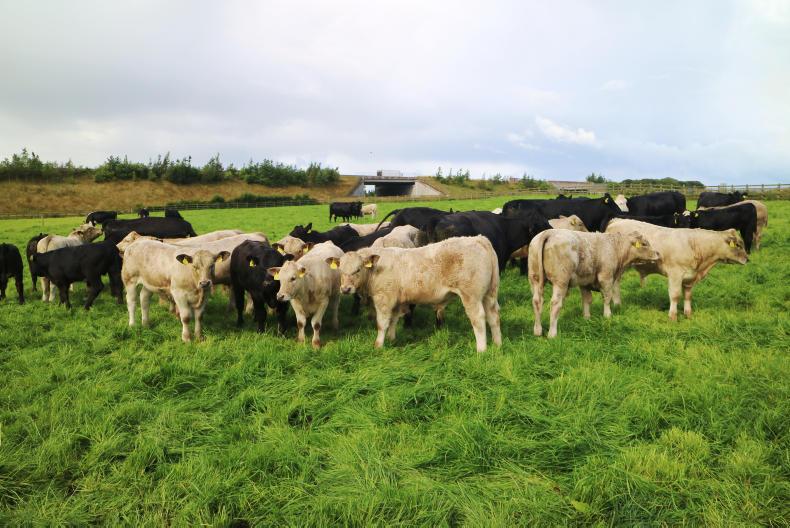

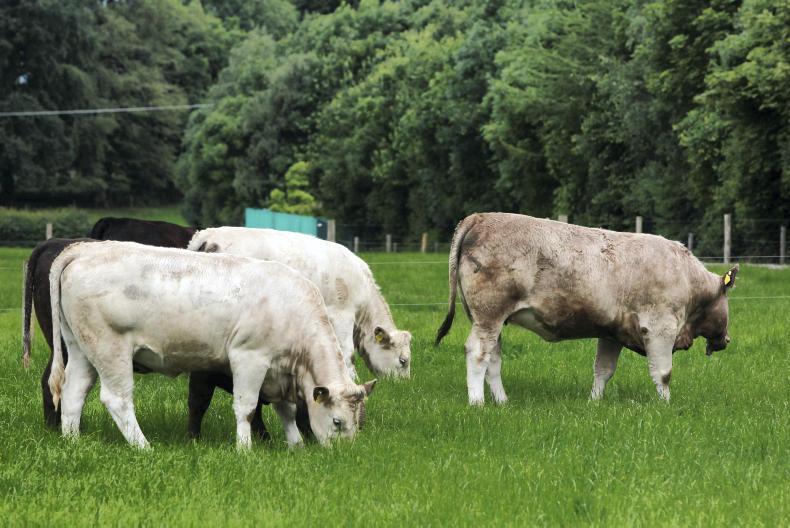
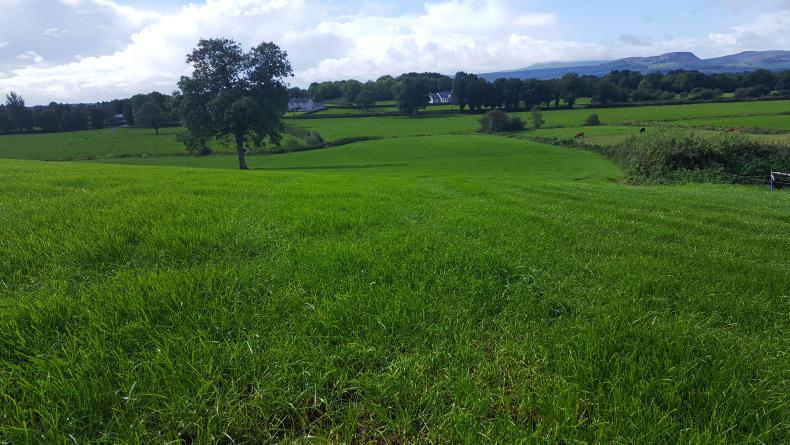
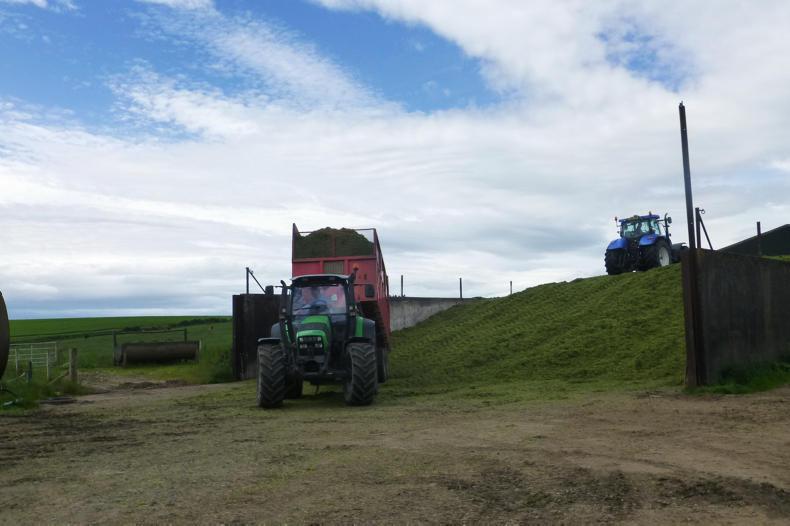
SHARING OPTIONS